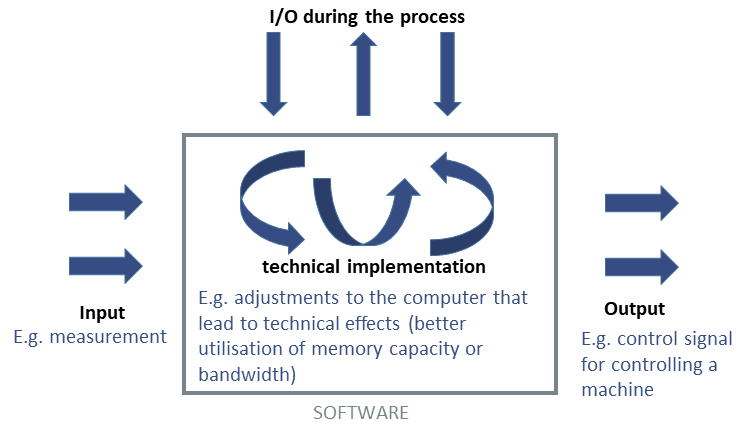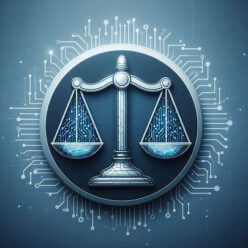In chapter “(3) COMVIK approach” we saw that there must be a technical interaction between non-technical features and the technical subject matter of the claim for the non-technical features to be considered for inventive step. Now we will discuss what kind of technical interactions are possible in computer-implemented inventions, basing this chapter on the Enlarged Board of Appeal decision G1/19, points 85 to 86.
Technical interactions in computer implemented inventions
The below figure shows – in a simplified, non-exhaustive form – how and when “technical effects” or “technical interactions” may occur in the context of a computer-implemented process.

The arrows in the figure above represent interactions that are different from abstract data input, data output or internal data processing or transfer. This means, the shown arrows do not represent abstract data.
Features that may contribute to inventive step
Technical input may consist of a measurement; technical output may exist as a control signal used for controlling a machine. Both technical input and technical output are typically achieved through direct links with physical reality. Adaptations to the computer or its operation, which result in technical effects (e.g. better use of storage capacity or bandwidth), are also examples of features that may contribute to inventive step (for a list of examples and references to the relevant board decisions, see T 697/17, Reasons, point 5.2.5).
In sum, technical effects can occur within the computer-implemented process (e.g. by specific adaptations of the computer or of data transfer or storage mechanisms) and at the input and output of this process. Input and output may occur not only at the beginning and the end of a computer-implemented process but also during its execution (e.g. by receiving periodic measurement data and/or continuously sending control signals to a technical system).
Certain features can be technical or non-technical per se
It is self-evident that the input and output are always nothing other than data, if only the data processing within the computer is considered, see figure below.

Computer-implemented processes, however, often include features – which could be technical or non-technical per se – that reflect the interaction of the computer with the external world, see figure below.

As explained above, it is not possible to exhaustively describe (or represent in graphical form) every type of feature of a computer-implemented invention that may contribute to the invention’s technical character.
